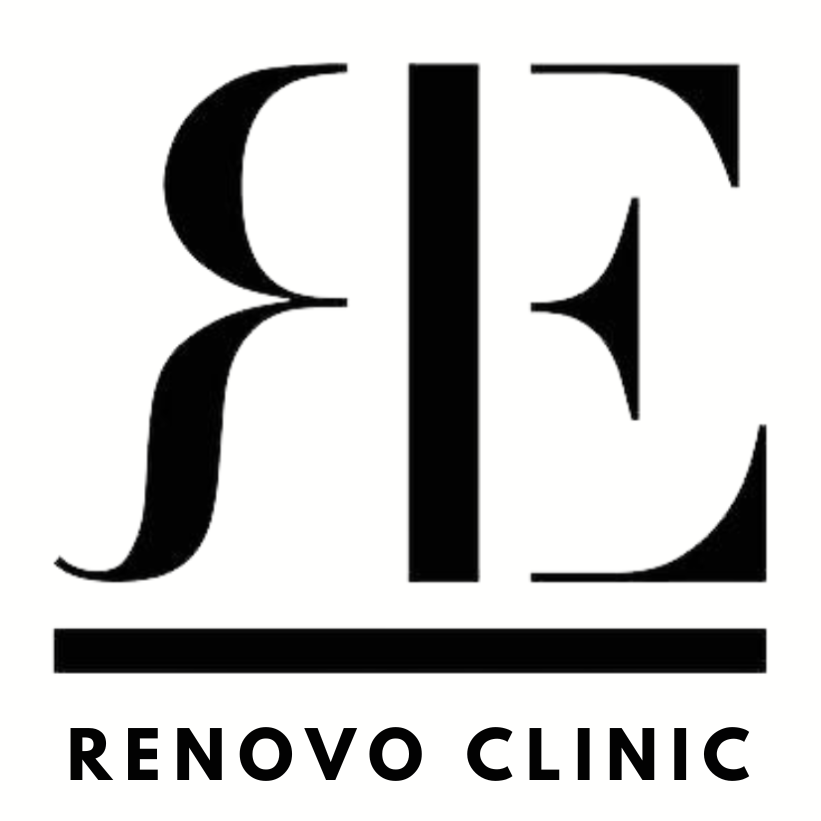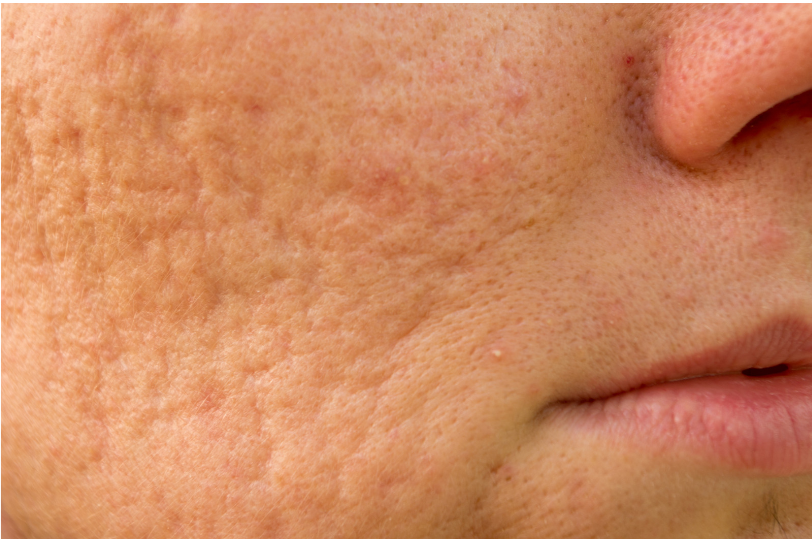What is Acne and Acne Scarring?
As defined in a different article we wrote regarding Acne, Acne is a recurring inflammatory skin problem that occurs when the hair follicles become clogged and plugged with sebum and dead cells, and the ones responsible for this are increased androgen-induced sebum production, altered keratinization, inflammation, and bacterial settlements on hair follicles, usually on the face, back, body, and neck, and in some cases the underarms and buttocks.
Types:
Papules (Red bumps): Pink-reddish bumps that hurt when touched
Pustules (Pimples): Pus-filled pimples. They’re usually red at the base with a white substance on top.
Nodules (Large Lumps): Solid and hurtful lumps that are larger than Papules. It can hurt more for it is more embedded deep within the skin.
Cysts: These lie deep within the skin and are filled with pus. Cystic Acne is more likely to scar.
Acne comes with acne scarring or lesions, but not all the time, for it still depends on the severity and type of acne present on your skin. For example, deep acne like cystic acne and papules are more likely to scar than pustules because it develops deep into the layers of the skin. Furthermore, the development of one’s acne scars depends on how one treats them. Acne scars are the effect of inflammation on the skin caused by acne, and it takes on two forms: either develops due to tissue loss that leads to skin surface indentation or raised on the skin’s surface.
Acne scars are innately stubborn, and there is no one method or technique to treat this. However, you can use a combination of procedures and treatments to improve the vivid appearance of acne scars or reduce it entirely, although it depends on your skin type, skin complexion, scar type, and acne scar severity.
Atrophic or Depressed Scarring:
Ice pick: Ice pick scars are narrow with less than 2mm lesion that is deep and is in the form of a cone (triangular form). It is the most common and the most challenging scar to treat, and it is usually found in the forehead and upper cheeks, where the skin is thinner.
Rolling: Rolling scars are usually wider than 4 to 5 mm lesions, and are usually found on the lower cheeks and jaw, where the skin is thicker. Its indentation has sloping edges that may present the skin as uneven and wavy.
Boxcar: Boxcar scars are less than 3 mm lesions and are round to oval in shape, so they are clinically wider than ice pick scars. Its indentation has sharper edges that go down deep into the skin. It is typically found on the lower cheeks and jaw.
Hypertrophic:
Keloid Scars: Keloid scars are scar tissue that rises off the skin when fibrous tissues, collagen, and affected area overgrows. This scar lesion is commonly found on the chest, back, shoulders, and jawline. Furthermore, they tend to be itchy, tender, or in some cases, painful.
What can you do to treat them (Microcell, Dermablate, Venus Viva)?
There are various ways to treat acne scarring, and some individuals use home remedies and skincare routines endorsed by famous personalities to treat this, but the best way to treat this and avoid further damage is to consult a dermatologist and undergo procedures and treatments prescribed by them. Furthermore, clinical studies have proven the association between wearing sunscreen in minimizing the severity of deep acne lesions. Here at The Renovo Skin Clinic, we offer dermatologically approved, tested, and prescribed laser procedures and treatments, such as Microcell, Dermablate, and Venus Viva.
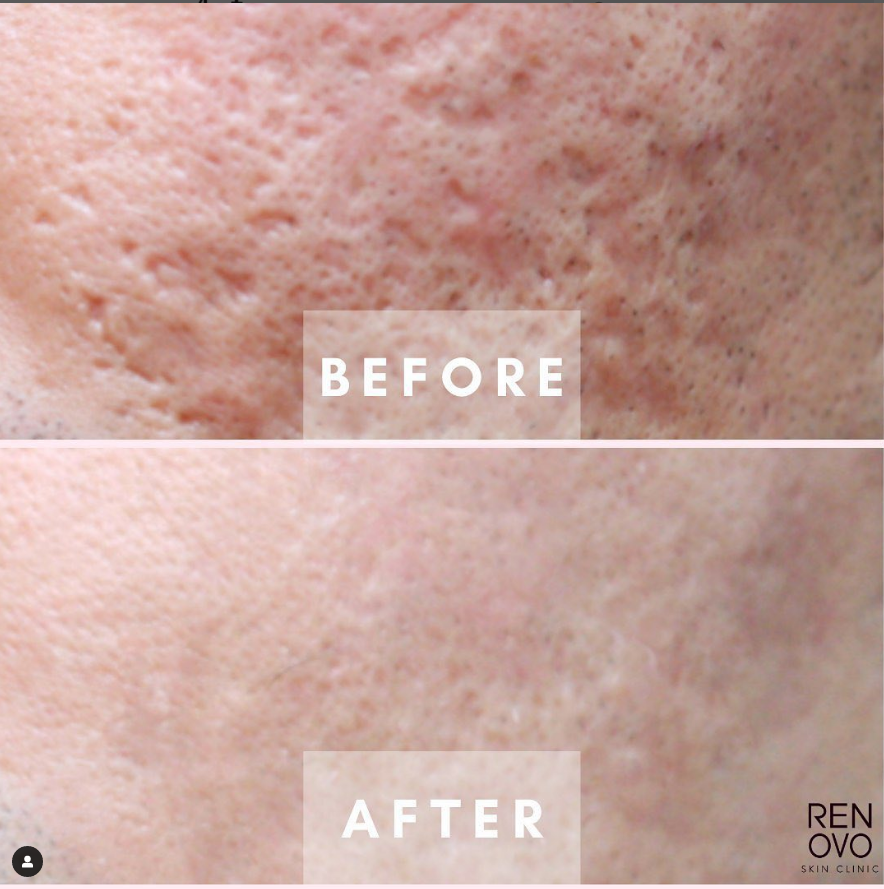
Microcell
Microcell (widely known as Intracel Radio Frequency Micro-needling) is an FDA-cleared non-surgical procedure that creates deep micro-dermal wounds to the skin using micro-needling and radiofrequency energy that penetrates the deep layers of skin without damaging the surface. Through this procedure, your body is triggered to produce more collagen and elastin production to improve the prominent appearance of wrinkles, scarring, enlarged pores, redness, and overall appearance of the skin. The procedures allow very fine needles to penetrate the deeper layers of skin to transmit radiofrequency energy to targeted areas accurately without damaging the outer layer of the skin.
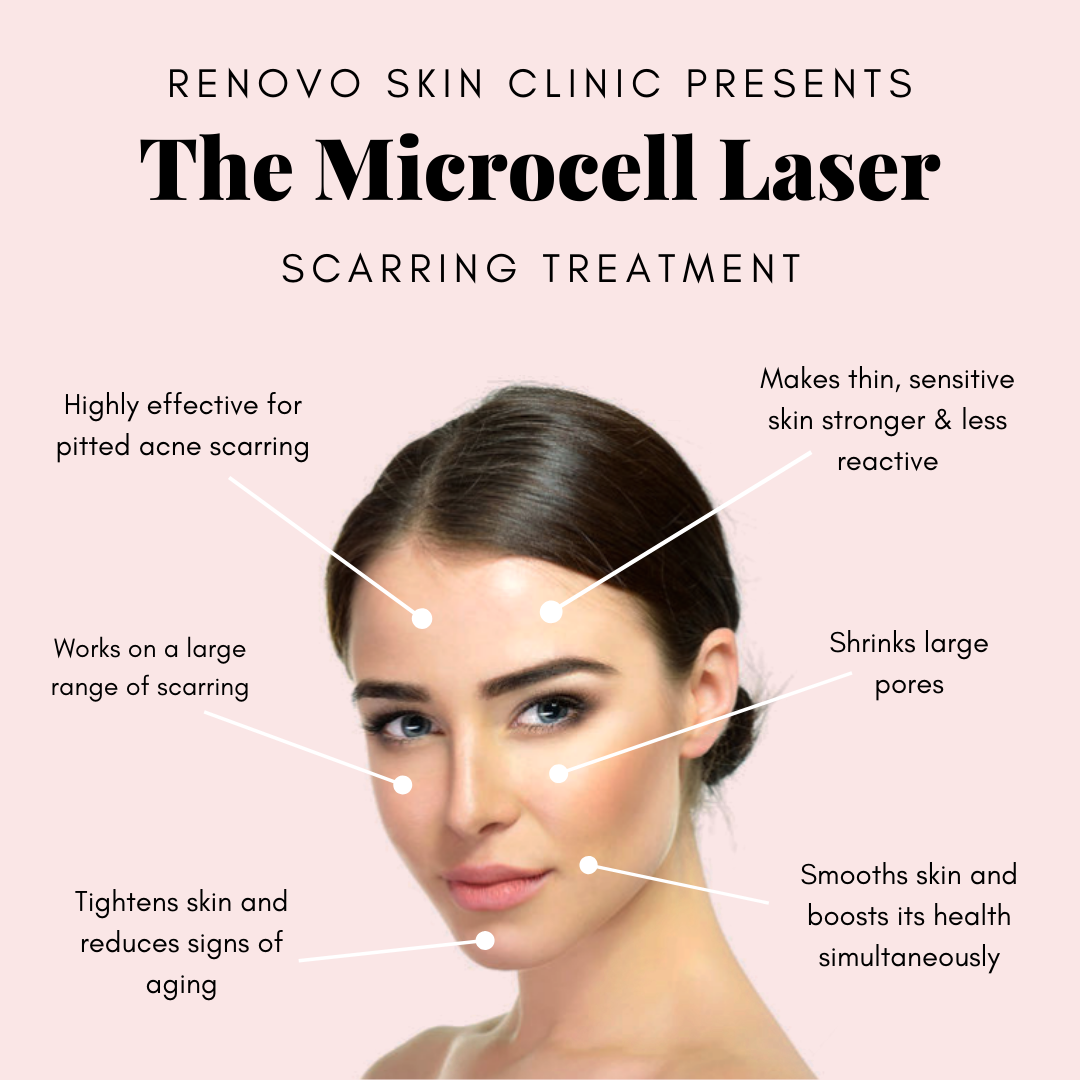
Dermablate
It is a highly tissue-selective treatment and the newest generation of ablative lasers that penetrate the dermis and epidermis without excessive skin damage. It is distinguished as one of the most popular nonsurgical skin resurfacing treatments due to its gentle and safe, but precise method of skin resurfacing, especially in South Korea. When active infrared lights hit the skin, it sends a signal to do a natural process of repairing the skin while the top cells are removed during the procedure. The Dermablate laser utilizes a 2.940 nm Erbium laser that is equivalent to the maximum water absorption of the skin, which makes it ideally suited for precise superficial skin ablation and coagulation in reducing the appearance of skin damage.
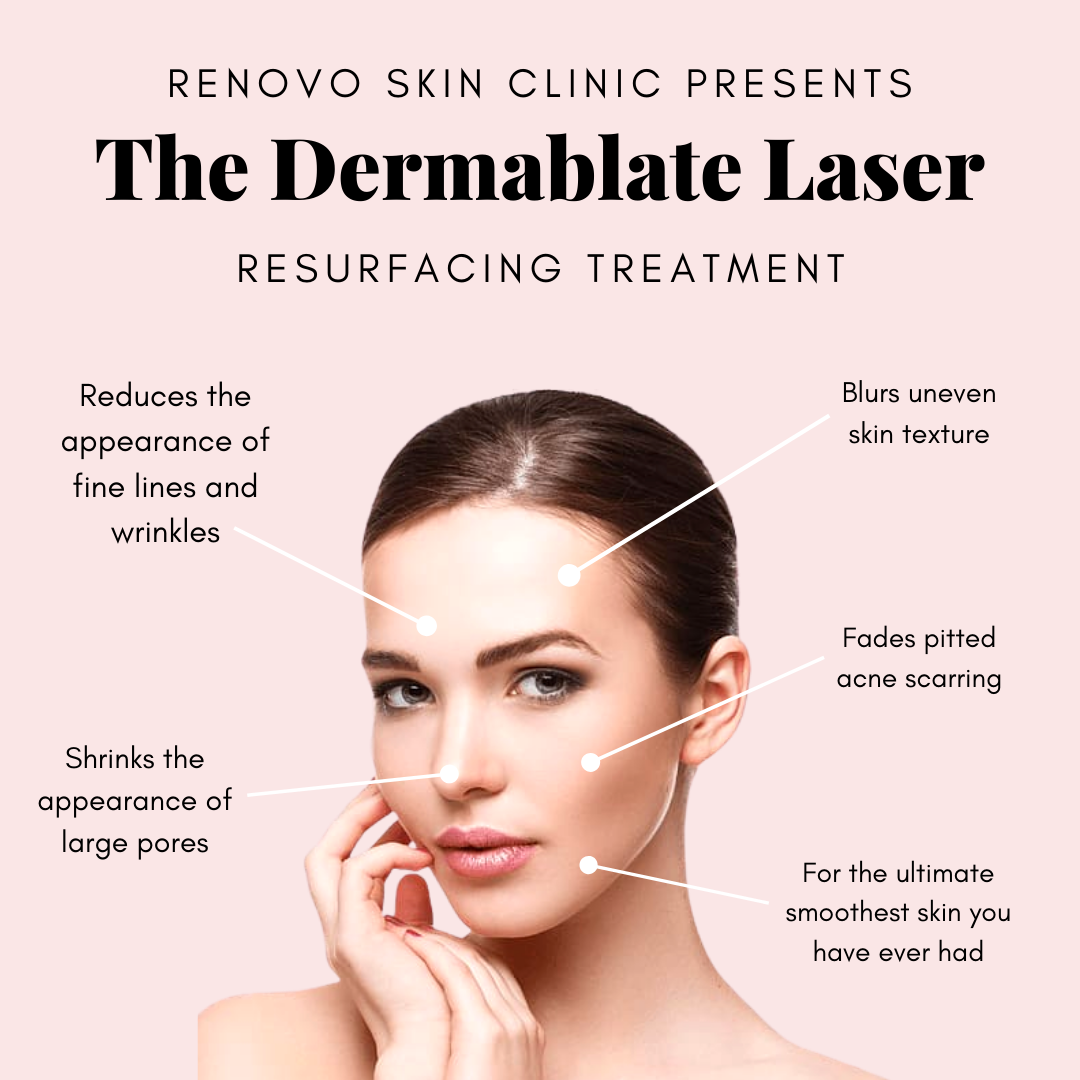
Venus Viva
Venus Viva is a type of non-surgical laser procedure for skin issues, and it is very popular among South Koreans. It addresses skin issues like acne scars, deep wrinkles, prominent and enlarged pores, hyperpigmentation, uneven skin tone, stretch marks, fine lines, skin laxity, and rosacea. Venus Viva resurfaces the skin using nano-fractional radiofrequency (RF) energy and is a very effective alternative to micro-needling and fractional facial treatments. Venus viva skin resurfacing treatments have tiny pins that deliver heat safely onto the skin with nano-fractional radiofrequency, which creates thousands of minuscule micro-dermal wounds that will eventually heal on their own through the natural course of one’s body.
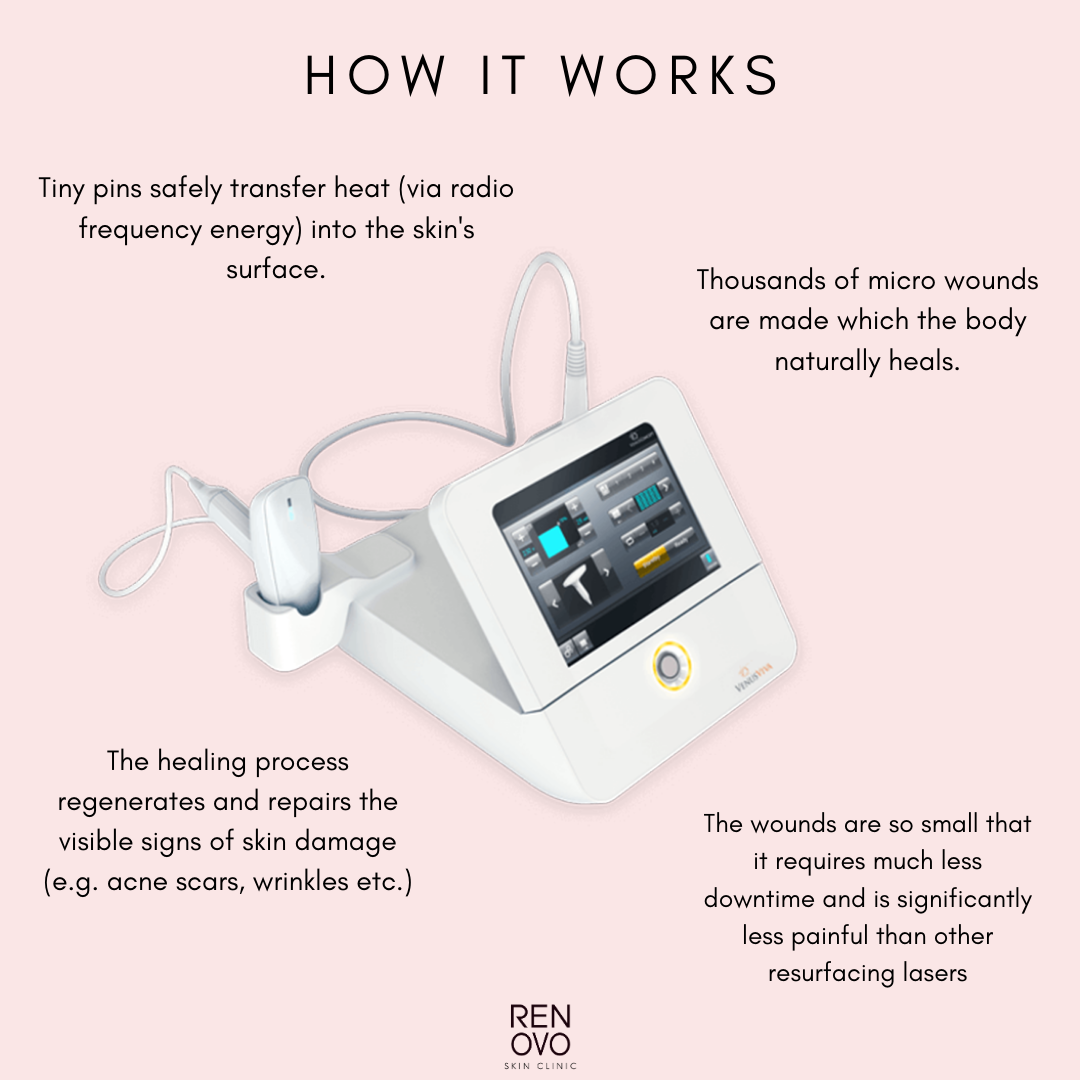
Others
In a clinical study conducted regarding acne scarring, it was found that treating early inflammation caused by acne may be the best approach to prevent acne scarring, and prevention leads to slim to no chances of post-acne scars. Furthermore, consulting a dermatologist or professional help may increase your chance of not developing post-acne scars or deep scarring, for you will be able to treat your acne with the appropriate medications.
In some cases, you may follow these easy steps to avoid acne scarring:
- Wear sunscreen every day, especially when going out
- Stop picking at your pimples, especially with unwashed hands
- Stop popping your pimples
- Clean your makeup thoroughly after a night out, and don’t fall asleep on them
- Avoid wearing heavy makeup if you have severe acne
- Follow post-treatment care of your treatments (if you have any)
- Religiously follow your skincare routine
If you are undergoing any kind of treatment, procedure, or medication to treat your acne scars, please note that the frequency of your session depends on the type of treatment or procedure you are taking, as well as the advised duration of it from your dermatologist. In some of our procedures, the recommended sessions are:
Microcell
After the first session, you will see significant improvements in your skin texture and notice your skin to be more plump and firm with diminished skin lesions and impurities. Best results are seen after three to five sessions spaced six weeks apart, especially in those with severe cases, but most doctors recommend at least three sessions.
Dermablate
After one session, some clients have shown satisfaction and significant improvements, but for people with severe cases, three to five sessions spaced four to six weeks apart are recommended.
Venus Viva
Three to four sessions are recommended by dermatologists with one every four to six weeks session, but it really depends on the intensity of your skin damage.
If you have further questions regarding the treatments offered at The Renovo Skin Clinic, you may contact us at [email protected] for online consultations, or you may visit us at Renovo Skin Clinic. We will walk you through it, guide you through every step, and treat you like royalty as you deserve.
